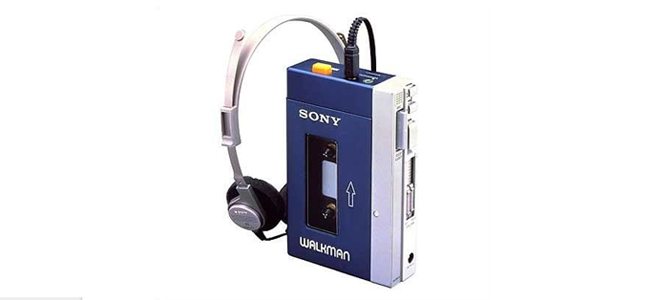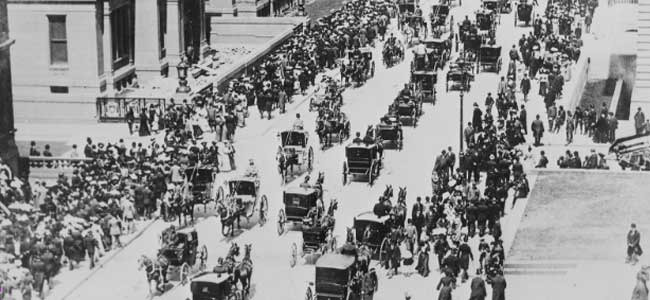Stories of Disruption
From a solution to manure piles to space tourism

disruption
dɪsˈrʌpʃn/
noun
1.disturbance or problems which interrupt an event, activity, or process.
2."the scheme was planned to minimize disruption"
3.disturbance, disordering, disarrangement, disarranging, interference interference, upset, upsetting,unsettling, confusion, confusing; Around 1900, there were 20 million horses across North America drawing carriages. New York city saw 200 human fatalities due to carriage horses going wild that year. On a lighter - and stinkier - note, officials were fed up with the tons of manure and flies around the city. One wag remarked that uncleaned, horse droppings would rise to the level of third-storey Manhattan windows by 1930.
dɪsˈrʌpʃn/
noun
1.disturbance or problems which interrupt an event, activity, or process.
2."the scheme was planned to minimize disruption"
3.disturbance, disordering, disarrangement, disarranging, interference interference, upset, upsetting,unsettling, confusion, confusing; Around 1900, there were 20 million horses across North America drawing carriages. New York city saw 200 human fatalities due to carriage horses going wild that year. On a lighter - and stinkier - note, officials were fed up with the tons of manure and flies around the city. One wag remarked that uncleaned, horse droppings would rise to the level of third-storey Manhattan windows by 1930.
Around 1900, there were 20 million horses across North America drawing carriages. New York city saw 200 human fatalities due to carriage horses going wild that year. On a lighter - and stinkier - note, officials were fed up with the tons of manure and flies around the city. One wag remarked that uncleaned, horse droppings would rise to the level of third-storey Manhattan windows by 1930.

Pic: Rush hour traffic, NYC, 1900
By the 1920s, stinking manure on roads thankfully became history, as automobiles replaced horses and sparked a national economic boom. Similar disruptions occurred as the century progressed. Typewriters gave way to word processors, and the Sony Walkman disrupted the music market only to be upended by the iPod. Aided by digital navigation tools, international air travel became de rigueur making passenger ships fit only for cruises. Entire industries and business models, not to mention countries, were impacted by the slow but unremitting march to a global digital transformation.
It’s all digital today
Sample this Whatsapp forward: the largest taxicab operator in the world (Uber) owns no taxis. The largest media house in the world is Facebook, which creates no content, unless you count Mark Zuckerberg’s photos of his closet of identical grey t-shirts. Airbnb owns no hotels or properties. You get the drift - it is no longer necessary to be a behemoth to disrupt. It is necessary to be a digital org.

Pic: 50 shades of grey:Content shared by Facebook’s CEO
Coined by American scholar Clayton Christensen in 1995, ‘Disruptive innovation’ refers to ‘...an innovation that creates a new market and value network and eventually disrupts an existing market and value network, displacing established market leading firms, products and alliances.’ It’s quite a broad definition. Seen in that light, British colonialism in the Indian subcontinent can be classified as a disruption as well - it brought an economy that accounted for 25% of the world’s industrial output in 1750 to less than 3% by 1900.
A sharper definition of disruption is available for digital business models. In their book Digital Transformation: A model to master digital disruption, authors Jo Caudron and Dado Van Peteghem posit that successive waves of emancipation (going digital, the internet, social media and mobile) have enabled the evolution from scarcity-dominated market positions and business models to a model of abundance. There are huge numbers of players offering interesting, similar solutions operating on a global scale. The disruption? It’s happening in product development (always in beta), pricing (the rise of freemium), go-to-market and so on.
A sharper definition of disruption is available for digital business models. In their book Digital Transformation: A model to master digital disruption, authors Jo Caudron and Dado Van Peteghem posit that successive waves of emancipation (going digital, the internet, social media and mobile) have enabled the evolution from scarcity-dominated market positions and business models to a model of abundance. There are huge numbers of players offering interesting, similar solutions operating on a global scale. The disruption? It’s happening in product development (always in beta), pricing (the rise of freemium), go-to-market and so on.

Pic: Fancy a trip to the International Space Station, courtesy SpaceX?
In a prescient 2011 report, Forrester Research had predicted that in comparison to older disrupters, digital disruption will see 10 times the number of disruptors, who will have 100 times the power to disrupt, at a cost that is 10 times less than in the traditional world.
The dilemmas of disruptors
Back to Caudron and Van Petegham - they have identified 10 hyper-disruptive business models from the freemium model and the on-demand model to the ecosystem model, and 7 strategies incumbents can employ to respond to the disruptor. Whether you are a disruptor or an incumbent, make sure you’re well acquainted with them because, as Forrester states in their report, digital product disruption as “better, stronger and faster”.
Along with disruption comes the Innovator’s Dilemma: another term coined by Christensen. It describes how successful, outstanding companies can do everything “right” and yet still lose their market leadership – or even fail – as new, unexpected competitors rise and take over the market. Although critics have said the dilemma applies more to the B2B space, Christensen has maintained that the iPhone (a classical consumer product) is ripe for disruption.
Along with disruption comes the Innovator’s Dilemma: another term coined by Christensen. It describes how successful, outstanding companies can do everything “right” and yet still lose their market leadership – or even fail – as new, unexpected competitors rise and take over the market. Although critics have said the dilemma applies more to the B2B space, Christensen has maintained that the iPhone (a classical consumer product) is ripe for disruption.
The faces of disruption
From Henry Ford to Steve Jobs to Mark ZuckerbergMark Zuckerberg, the faces of disruption and their stories have been shared across media and talked about. But all disruptors need not be white males: earlier this year, TechCrunch profiled 21 women disrupting tech BBC has parked a space on their site to profile digital disruptors across the world, while TechStory counts 9 Indian firms among the fabled ‘unicorns’ disrupting marketplaces: Flipkart, Snapdeal, Mu Sigma, InMobi, Paytm, Zomato, Shopclues, Ola and Quikr. Note that seven of these are in the consumer internet space, and many ride on local variations of disruptive business models started elsewhere.

Pic: A disruptor in our backyard
uture disruptions are being planned and implemented as you read this: transforming the lives of millions in ways big and small: whether in space tourism or clean cookstoves, in the Chan Zuckerberg biohub, or in AI: touted to be the ‘great disruptor’ of our era. Many are sure to be the “better, stronger and faster” products that will change our lives in ways we can’t imagine today.
Facebook
Twitter
LinkedIn
Trending Posts
Tagged blogs




